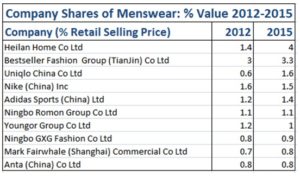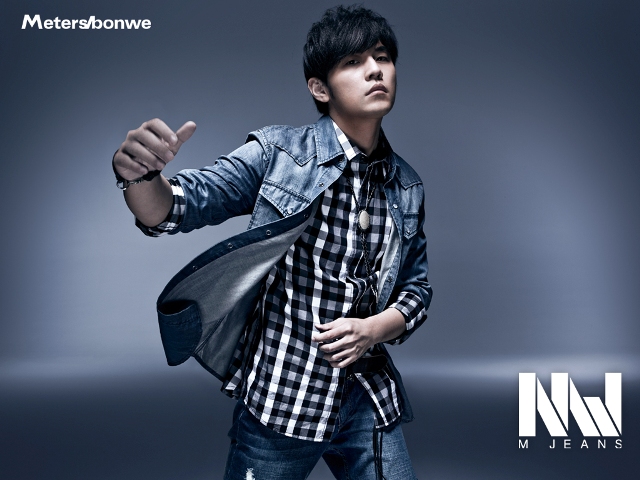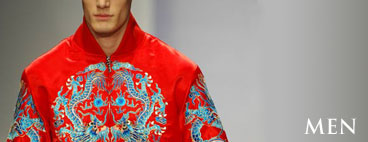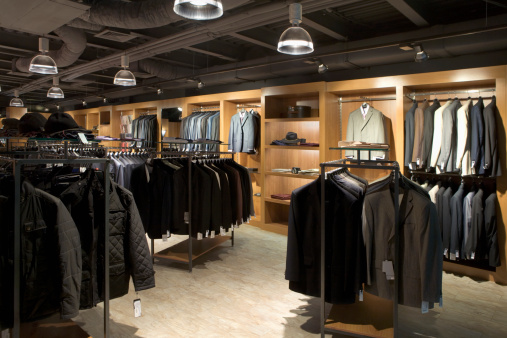To know more about the men’s clothing market in China, contact us at dx@daxueconsulting.com
In mainland China, men’s clothing is a bigger market than women’s clothing. Menswear accounts for 43.6% of the clothing industry’s total sales value. The men’s garment market is expected to grow from nearly RMB 500 billion in 2015 to more than RMB 600 billion in 2018. Moreover, according to Daxue Consulting’s research, the market is also showing fast evolution in terms of consumer habits and brand perception. The market is highly fragmented and Daxue’s surveys show the emerging impact of a few strategic segments (millennials, elderly, tier-3 to 5 cities) for future market value. All brands, therefore, mustleverage market research more effectively to better understand their strategic segments and to perform successfully in the Chinese market.
Men’s clothing market in China
The men’s clothing industry worldwide is growing and the audience is becoming more diverse.Consumers are willing to spend more on quality, which creates an overall growing trend for the average purchase value to increase. The men’s marketwas previously concentrated around historical brands and experienced a steady growth from the 90s. “I rely on the same brands since 25 years, since I have been in age of buying my clothes myself actually” said a 48 years old consumer from a China tier-3 city during an interview with Daxue Consulting. “But today, these brands seem a bit old-fashioned.”
While the menswear market is showing the most promising potential in the Chinese clothing industry, specific segments of consumers will constitute the major stakes.Brands will need to adapt their marketing models to take advantage of the consumer preferences from the various segments.
Chinese Market Segmentation
The Chinese menswear market is becoming more and morefargmented in terms of consumer segments (elderly vs millennials, tier-1 and -2 vs tier 3 to -5) as in terms of product segmentation (casual wear, sportswear, fast fashion, business casual, high-end fashion). The business casual wear is increasing in popularity, and the design is more and more creative and fashionable, taking influences from Japanese, Korean and European styles. “I think we – Chinese consumers – are definitely looking for new style of clothes. We don’t like extravagant clothes, but I personally like the style of (European brands), it shows I have a kind of elegance”, told us a middle-age consumer in a China tier-1 city. The growing trend for business casual wear, especially for the Chinese millennial has further undermined the sales of men’s suits. The workers, such as professionals or managers, are the strongest buyer of business casual wear in the mainland. The university-aged, however, are also expected to be a great potential for the country.
Men are paying more attention to their appearance and are consequently increasingly critical regarding the choice of their clothes. Consumers, especially the millennial are influenced by celebrities, as for many products and services sold in China. “I am following some sport and music celebrities on Weibo. I mainly try to get inspired by their style. I especially like to check more experienced men style to look more professional in my work,” claimed a young millennial. The most purchased clothes are jeans, T-shirts and trousers. In terms of brand selection, according to a recent quantitative survey, Chinese consumers are mostly looking for a good cutting-edge style and image with guaranteed quality. Chinese men when buying clothes are always looking for specific features both on the quality and on the style of the cloth.For instance, a piece that could suit different environments and occasions.
Competitive frame
Top 10 men’s clothing brands in China – Market share of Foreign and local brands

Source: Euromonitor
In order to leverage their advantage in distribution channels and design, local brands are planning to enter into license agreements with foreign brands. Among the top 10 men’s clothing brands in China, the strategy has resulted in brands that are really unique and are following the market trends.
Follow the evolution of the market in terms of purchasing patterns and distribution
In modern society, Chinese men’s clothing is more and more connected to the global fashion trend. Their style is comfortable, simple and cost-effective. While the parents remain the decision-makers until late in the Chinese millennials life, men are less and less dependent of their spouse purchases and tend to shop themselves more. Therewas a defined color spectrum with regards to their clothing. Chinese men had relatively simply designed clothes as compared to their female counterparts. With the rise of the middle class, Chinese men’s requirements for garments are gradually changing from convenient and sports clothes to more elegant and sophisticated clothes. Indeed, the men’s market in China is already becoming a major market for the international high-end men’s clothing, with increased spending on men’s garments through online stores. The industry revenue is decelerating but it will maintain an exceptional high-growth rate. The industry will continue to improve its brand image and optimise its distribution channels.For example, a better use of online-to-offline (O2O) strategies to integrate sales for supporting the growth.







